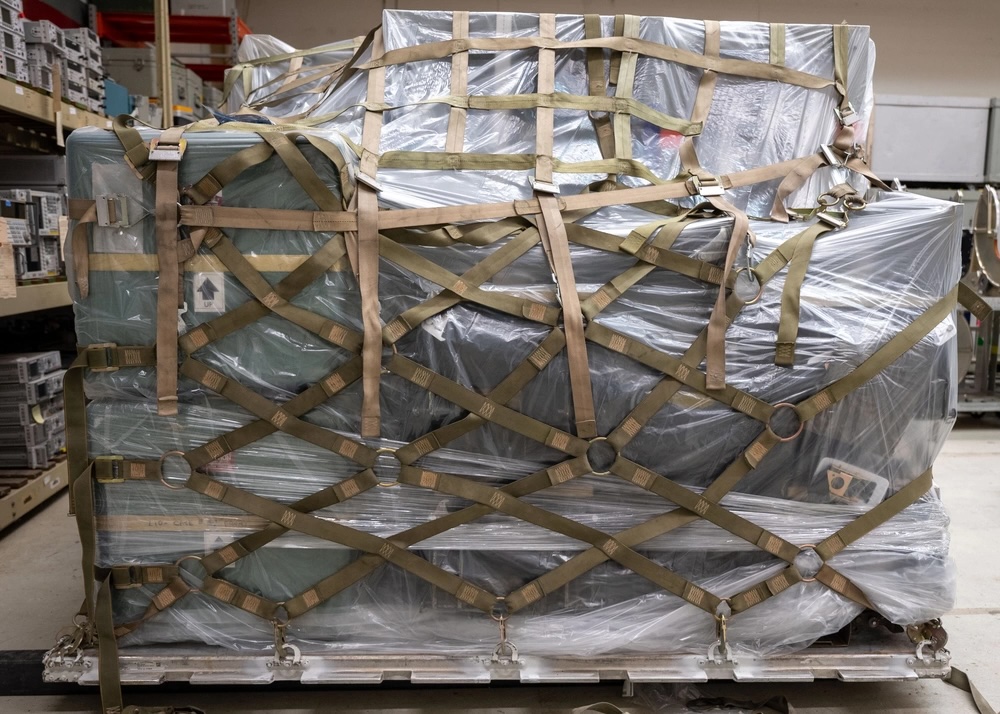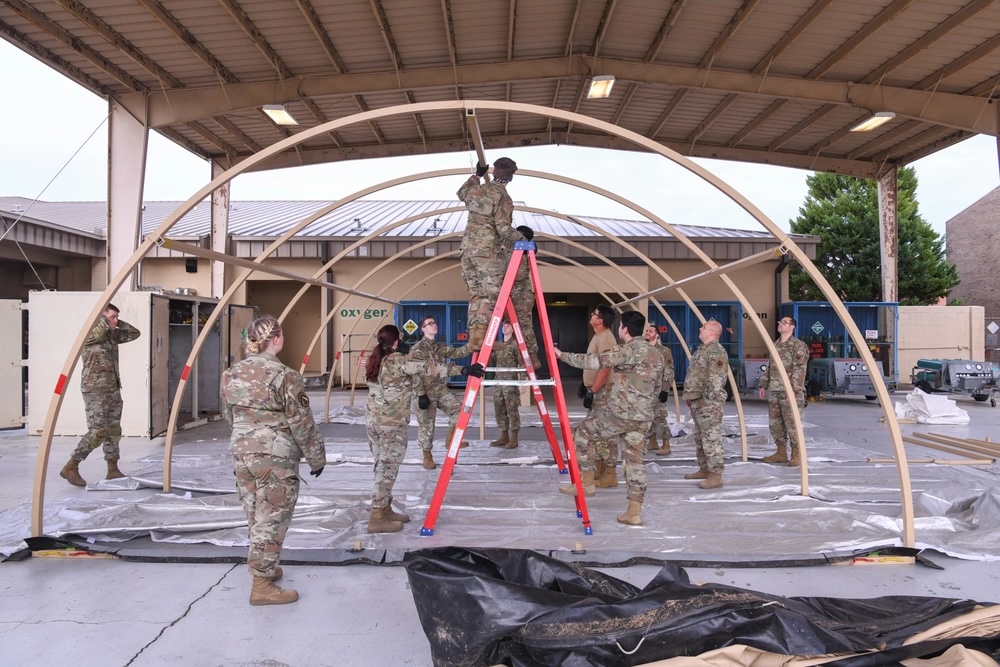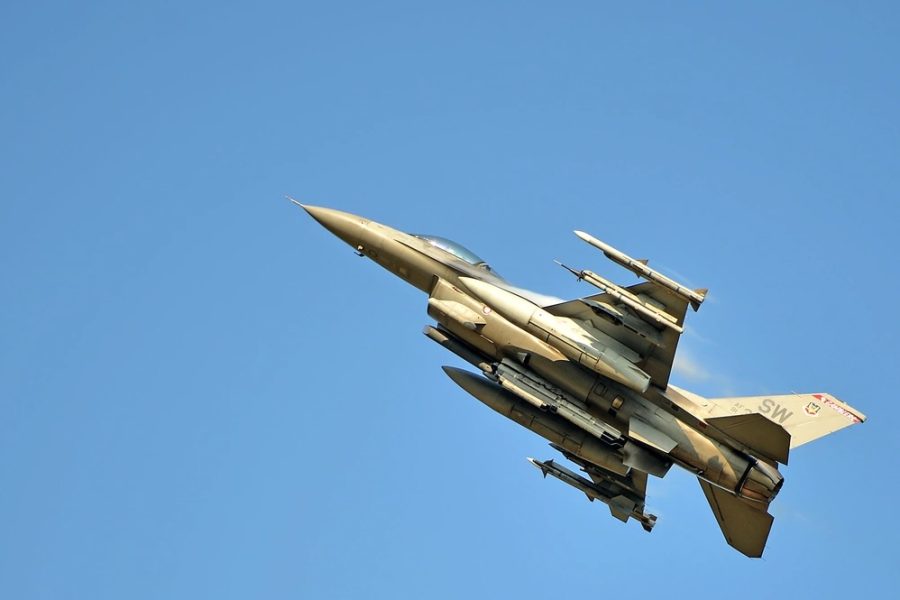Editor’s Note: This story was initially published Jan. 11 and updated Jan. 23 with additional details.
The F-16 fighter jet is famous for its maneuverability, and the A-10 attack jet for its armor and armaments. But one of the most important features protecting those aircraft in combat is an unassuming grey cylinder slung beneath their bellies: the ALQ-184 Electronic Countermeasure pod, which protects the jets in the electromagnetic spectrum.
The ALQ-184 ECM pod jams or deceives enemy radar that could be used to track and target the F-16 or A-10. The pod “is a go/no-go item for a combat mission,” retired Lt. Col. Gregg Montijo, a former A-10 pilot, told Air & Space Forces Magazine. “Without a pod, you cannot go into any high threat radar environment both on the ground and in the air.”
As important as they are, the sensitive electronics within ECM pods are vulnerable to break amid the extreme temperatures, high-G forces, and rough conditions that combat aircraft often fly through. In the past, Air Force maintainers often could not repair the vital pods far from a large base. But in November, a team of maintainers at Shaw Air Force Base, S.C., demonstrated they could rapidly deploy to repair the broken ECM pod, even in austere environments.
Now, a 20th Fighter Wing spokesperson told Air & Space Forces Magazine, the team is working “to iterate towards real-world forward deployment of it.”

“As the warfighting environment changes, the mobile capability allows U.S. forces to adapt and work in new locations to keep the ALQ-184 ECM pods operational,” Senior Master Sgt. Jerry Rosario, avionics flight chief for Shaw’s 20th Composite Maintenance Squadron, said in a recent press release.
“By our team keeping the ALQ-184 ECM pods operational, we provide a defensive system for the aircraft to save pilots’ lives, while carrying out the suppression of enemy air defenses missions downrange,” Rosario added.
The squadron’s electronic warfare section inspects and repairs more than 100 ECM pods for F-16s at Shaw and for A-10s at Moody Air Force Base, Ga., and acts as Air Combat Command’s only Centralized Repair Facility for the ALQ-184, the press release said. The pods are particularly helpful for the F-16s at Shaw, which fly the ‘Wild Weasel’ mission: suppression of enemy air defenses, sometimes by being shot at them first.
In years past, when an ALQ-184 ECM pod was damaged, it had to be returned to a large base for troubleshooting and repair, the release explained. But now, with just two pallets of gear, the maintainers “can set up an entire pod repair capability with a small team in any environment.”
The 20th Fighter Wing spokesperson said other maintenance units across the Air Force can perform “intermediate-level maintenance” on ECM pods and more. But even in deployed settings, that meant sending personnel to centralized, fixed locations within the theater.
This new capability is different in that it is mobile. The development is well-timed, as the Air Force writ large strives for Agile Combat Employment, a strategy where small groups of Airmen quickly hop between austere airfields in order to throw off an enemy’s targeting process.
“The new mobile team format supports an ACE-oriented rapid, flexible response and enables our maintainers to forward deploy in support of air operations at a variety of operating locations, reducing airlift requirements and regenerating aircraft faster,” the 20th FW spokesperson said.
Only eight Airmen are required for a pods-specific mobile repair team, and those eight Airmen are drawn from a larger mobile intermediate repair team made up of about 30 maintainers who specialize in electronic warfare, avionics intermediate support, precision measurement equipment, and propulsion.
“The ability to fix them locally at the base versus sending them out to a depot or major center is huge,” said Montijo. The retired A-10 pilot recalled a similar capability years ago, but “having it back is a good thing.”

Even so, the ALQ-184 is not the newest kit on the block, especially as radar technology evolves. The pods were used as far back as the Gulf War, and new technology such as the AN/ALQ-257 Integrated Viper Electronic Warfare Suite (IVEWS) could replace them.
While the ALQ-184 will eventually fade away, the lessons from the 20th CMS’ mobile repair teams may stay around: the press release noted that other electronic warfare maintenance sections want to emulate those at Shaw. Tech. Sgt. Damien Lange, the squadron’s electronic warfare sensor noncommissioned officer in charge, put together a training binder to teach others how to do it.
“Creating these training materials will serve as a valuable reference for us and future Airmen,” he said.
